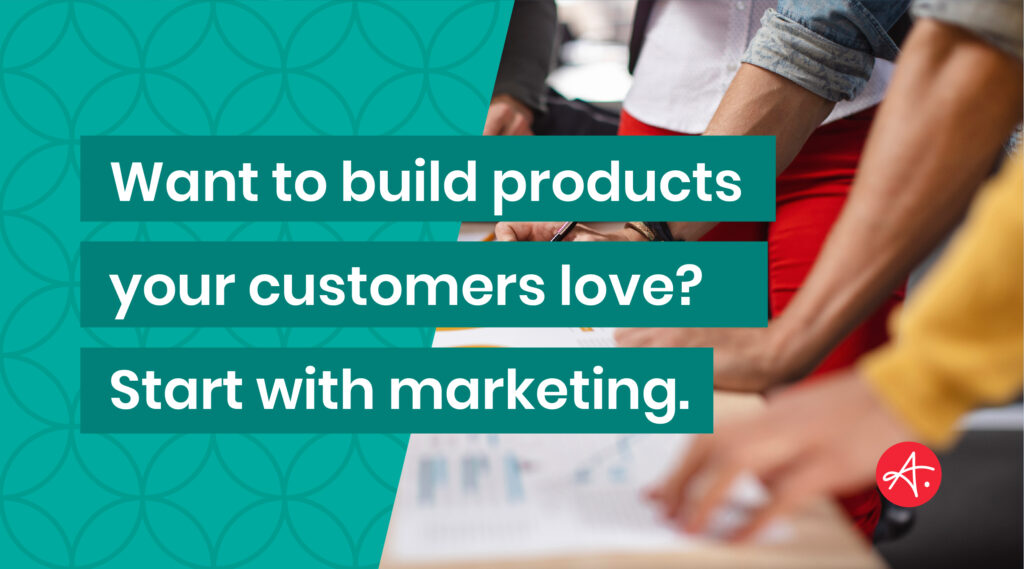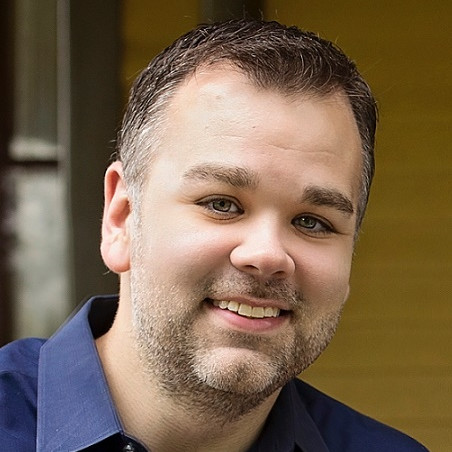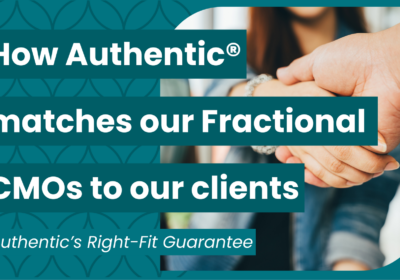
Every product company wants to create products their customers love. But the path to building and launching these products isn’t always straightforward. It’s an effort that requires multiple business disciplines — including marketing — working together collaboratively to understand and meet customer and market needs.
In this month’s virtual panel, we interviewed Authentic Fractional CMOs Ruth Glaser, Steve Grady, and Jerron Nanneman to learn more about the critical role marketing plays in product development. The fractional CMOs shared advice on how (and when) best to leverage marketing’s skills for every stage of product development— from market analysis to product conception to product launch to the end of a product’s lifecycle.



1. It can be challenging to know the correct way to involve marketing in product development, but marketing plays a critical role in a successful product launch. How (and when) should businesses engage marketing during the product life cycle?
Steve: Marketing is actually the starting point for new product development. Not a single dollar should be spent on product development until these important questions are answered:
What market are we addressing? Who are we serving? What problems do our ideal customer personas have? What success results do they expect? What is their willingness to pay for these results? What is the revenue potential of our potential solution? How will it be purchased? What are the various forms of competition?
All of these marketing questions have to be answered before any actual product development should begin. Then, if you do all this upfront marketing well, the actual product launch marketing is a breeze because you have already drafted all of your messaging for your ideal customers.
Jerron: I think the best answer is “frequently.” If you are a small enough business, marketing usually has an active role from the conception to the sunsetting of a product. But as companies get bigger, it’s too easy to wait to engage marketing.
Product development is one area where I think it’s great to add a formalized marketing process early in an organization’s life. This process creates an opportunity to review the consumer and the current market early in development, which can help businesses avoid a lot of wasted time. A customer value proposition audit can help ensure the right features are prioritized during iterative development. And, obviously, marketing should be included in the product launch!
I also personally think marketing should take the lead in identifying the end of a product’s life (when it no longer is adding positive value to the brand identity), so products are retired strategically instead of dying from lack of sales.
Ruth: Jerron mentioned, “Obviously marketing should be included in the product launch!” But for many companies, the extent to which marketing can contribute to successful launches is not fully realized.
Many companies find early success because they introduced a great product to fulfill a known need. This can lead to a “if we build it, they will come” mentality. As soon as they can produce the product off the line, or deliver the service, it just needs to be posted on the website and the sales will start rolling in, right?
The details of initial customer testing and review, asset development, PR, launch campaigns, promotions, and channel rollout can be overlooked or not adequately planned for in launch timelines and budgets — and that’s just the tail end of the product launch process. Sustainable growth also requires product development informed by a deep understanding of the customer, their evolving needs, and a changing market landscape. So, yes, successful product launches involve marketing early and often.
2. Building products that customers love starts with understanding what customers want and need. How do you recommend businesses uncover these customer insights for product development?
Ruth: There is so much that can be learned from sales, customer service, and professional services reps. That is, the people who are helping customers engage with the product or are actually delivering the service. They have a keen understanding of the customers’ challenges and needs, and those insights can help inform future product iterations or new product development. I’ve seen companies use customer service for cost-effective Voice of the Customer research. There are a variety of tools and techniques marketers typically use to deepen an organization’s understanding of customers’ wants and needs, like online surveys, website behavior, focus groups, customer interviews, social media, etc.
Steve: So many companies treat new product development as current product extensions or as a reaction to competitors’ new products. One of the best ways to undertake new product development is to use the Jobs To Be Done (JTBD) framework popularized by Clayton Christensen.
We all know that people “hire” products to get jobs done. The JTBD framework enables companies to deconstruct a job that customers are trying to get done into specific process steps. The resulting job map provides a structure that makes it possible, for the first time, to capture all the customer’s needs and to systematically identify opportunities for growth.
Your product team can then brainstorm ways to make steps easier, faster, or unnecessary. Products that accomplish this are quickly adopted, and revenues rise rapidly. You also use JTBD to understand customers’ willingness to pay, who your true competitors are, and calculate well-substantiated revenue forecasts.
Jerron: That’s a tough question for me. There are so many great products and services from visionary entrepreneurs and designers who intuitively saw the need. To consistently build products customers love, in a repeatable way, in an established organization is probably the ultimate goal of every business strategist.
You can’t ever know your customer well enough. You can’t ever spend enough time observing people using a product or participating in the activity that your product focuses on. If I had an insight to offer, it would be to watch how people shop. There is so much learning to happen by watching people make decisions. You can uncover amazing insights when you can ask those people questions about their buying decisions. (Though it’s a talent to do that in everyday life without freaking people out!)
3. We’re all familiar with the quote, “Perfection is the enemy of progress.” How does this apply to product development and go-to-market strategies?
Jerron: I had a professor in grad school say, “If it takes an hour on Monday to get to an answer you are 80% sure is correct, why would you spend the rest of the week trying to get to 100% certainty?” That statement is now a core part of my being.
The best way to ensure you avoid waiting for perfection is to create a culture where it is okay to fail. Champion the individual that made a bold strategy and failed more than you champion the one who got lucky and blew away their numbers. Be prepared to fix mistakes, and then go with what your best information tells you is the right thing to do. Over the life of a product, getting features out to the market before competitors will make up for any missteps.
Ruth: I second the thoughts on failure. I once read that failure is just a data point, and that hit home. In the context of product development, failure should be seen as a stepping stone toward success.
Successful marketing is built on failures. We develop programs based on educated hypotheses, measure, analyze what worked and what didn’t work, and modify (or “optimize” in marketing speak) for greater results the next time around.
What I love about progress over perfection is that businesses see results sooner with this iterative approach.
Steve: I agree with Ruth and Jerron. If you wait until your product is perfect, you are late to market and have not collected vital early customer feedback on what defines “perfect.”
There are some tricks to launching a Minimum Viable Product (MVP) to get market feedback. If you choose to provide minimum functionality across many areas of your product, it will not be useful to anyone, and your MVP product will get a bad reputation. Instead, you should release an MVP that effectively solves one of the key Jobs To Be Done — and doesn’t address the other Jobs To Be Done quite yet. Your users will say, “I really love this feature, but I really want (fill in the new feature name here) too. Your MVP users will tell you very specifically what to build next. If you build what they ask for, they will become loyal lifetime customers.

The path to a new product launch can be full of pitfalls and detours. If you’re feeling the pain associated with bringing a new product to market, let’s discuss how one of Authentic’s Fractional CMOs could help. Our strategic leaders are experienced at aligning teams, strategics, and tactics for impactful and successful product launches.







